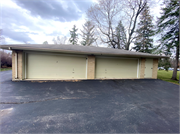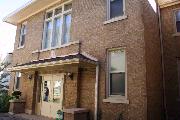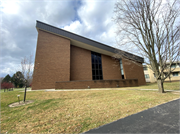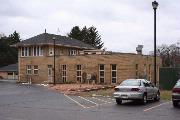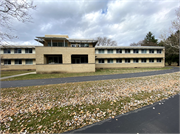13105 Watertown Plank Road
| Historic Name: | Visitation Convent Complex |
|---|---|
| Reference Number: | 11000311 |
| Location (Address): | 13105 Watertown Plank Road |
|---|---|
| County: | Waukesha |
| City/Village: | Elm Grove |
| Township: |
| Visitation Convent Complex 13105 Watertown Plank Road, Village of Elm Grove, Waukesha County Dates of construction of contributing buildings: 1899-1958 Architects: Eugene Liebert; Brust & Brust; Backes & Pfaller; Herbst, Jacoby & Herbst As the story is told, in 1855, Mother Caroline Friess, Vicar General of the School Sisters of Notre Dame in America (primarily a teaching order), was on her way from the Milwaukee Motherhouse to Watertown, when her horse abruptly stopped, refusing to go further. Mother Caroline took this as a sign from God that this was the location upon which she was to build a convent, orphanage and small rural school. The Sisters purchased forty acres in 1856 and, shortly thereafter, a cemetery was established and the convent/orphanage and school were completed by no later than 1859. Beginning shortly before the turn of the twentieth century, the School Sisters embarked on a new era of construction on the campus. They completed their first building, Notre Dame Hall, in 1899; it served as a combined orphanage, infirmary and convent quarters. Its German Renaissance Revival-style architecture reflects the heritage of the Order, which originated in Bavaria. The building includes a notably detailed Romanesque Revival-style chapel on the interior. In 1903, an additional German Renaissance Revival style building was erected; it included a public meeting hall and later served as the orphanage. The year 1921 brought another period of construction to the campus, including the Classical Revival-style Maria Hall (convent quarters specifically for retired Sisters), a tuberculosis hospital known as "The Bungalow," as well as a combined boiler house and caretaker's residence. The latter two buildings exhibit Prairie Style influence. Over thirty years later, the campus saw the construction of two hospital wings, one to serve the mentally infirm, while the other served as a general hospital wing and included additional services of physical and occupational therapy. Not only does the Visitation Convent Complex exhibit a range of architectural styles that were popular in Wisconsin between circa 1900 and the 1920s, but it also served the sick, disabled and handicapped of the SSND community. The combination of buildings, with the associated cemetery, stands as a testament to the need for, and school Sisters' commitment to, continuous (and perpetual) care for its own population, whether it be physical ailment, mental infirmity, or simply old age.
|
| Period of Significance: | 1899-1961 |
|---|---|
| Area of Significance: | Architecture |
| Area of Significance: | Health/Medicine |
| Area of Significance: | Social History |
| Applicable Criteria: | Event |
| Applicable Criteria: | Architecture/Engineering |
| Historic Use: | Domestic: Institutional Housing |
| Historic Use: | Religion: Church Related Residence |
| Historic Use: | Health Care: Hospital |
| Historic Use: | Funerary: Cemetery |
| Architectural Style: | Late 19th And 20th Century Revivals |
| Architectural Style: | Prairie School |
| Resource Type: | Building |
| Architect: | Backes and Pfaller |
| Architect: | Herbst, Jacoby and Herbst |
| Architect: | Brust and Brust |
| Architect: | Liebert, Eugene |
| Historic Status: | Listed in the National Register |
|---|---|
| Historic Status: | Listed in the State Register |
| National Register Listing Date: | 05/25/2011 |
| State Register Listing Date: | 02/18/2011 |
| Number of Contributing Buildings: | 7 |
|---|---|
| Number of Contributing Sites: | 1 |
| Number of Contributing Structures: | 1 |
| Number of Contributing Objects: | 2 |
| Number of Non-Contributing Sites: | 1 |
| Number of Non-Contributing Structures: | 1 |
| Number of Non-Contributing Objects: | 0 |
| National Register and State Register of Historic Places, State Historic Preservation Office, Wisconsin Historical Society, Madison, Wisconsin |

